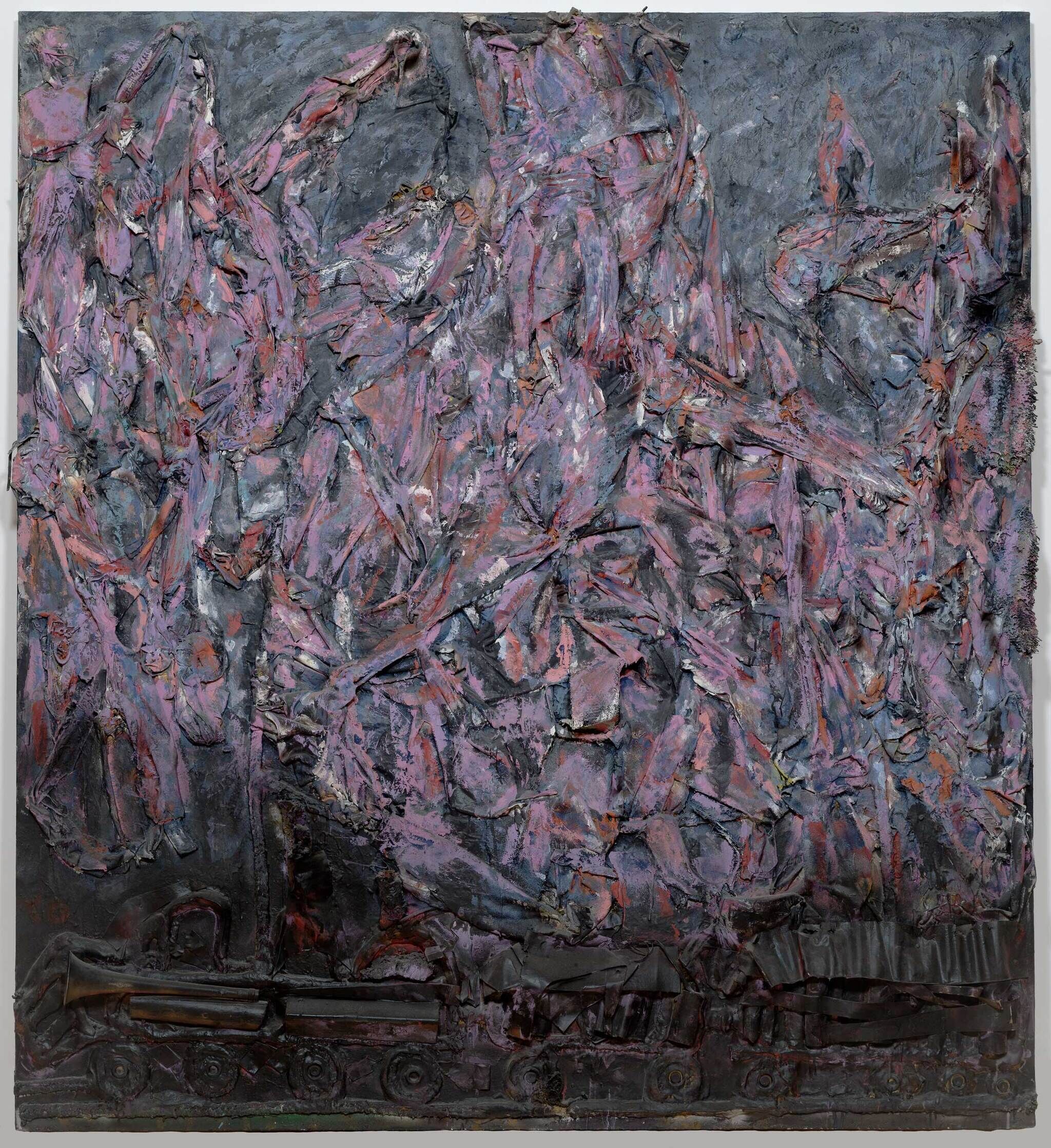Edges of Ailey | Art & Artists
Sept 25, 2024–Feb 9, 2025
Edges of Ailey | Art & Artists
Black Music
7
For Alvin Ailey, dance and music were art forms of and for the people, originating and enduring in homes, the streets, and other everyday spaces. Rather than see dance as merely a response to music, he saw that both allowed an artist to express the spectrum of their feelings and experiences—a pillar of Ailey’s creative philosophy.
The foundations of Ailey’s dances often stemmed from the rich history of Black musical traditions, from the stirring harmonies of gospel and spirituals, to the existential tenor of blues and soul, and to the improvisations and discordant rhythms of jazz. In one notebook he wrote: “One must discover what the music is about and visualize it if possible.” Dance was his way of meeting this dual imperative: to embody music’s energy and to enhance its possibilities of meaning through movement. Beyond setting his dances to specific songs, Ailey often relied on their melodies and percussive beats to dictate his initial choreographic steps and patterns. He also frequently turned to the lives of singers and musicians as his subjects, including Duke Ellington, Donny Hathaway, Hugh Masekela, Jay McShann, Charlie Parker, Nina Simone, and Bessie Smith, among others.
Artists
- Terry Adkins
- Alvin Ailey
- Emma Amos
- Benny Andrews
- Ellsworth Ausby
- Eldren Bailey
- Richmond Barthé
- Jean-Michel Basquiat
- Romare Bearden
- Kevin Beasley
- John Biggers
- Beverly Buchanan
- Elizabeth Catlett
- Karon Davis
- Roy DeCarava
- Beauford Delaney
- Thornton Dial
- Aaron Douglas
- Sam Doyle
- David Driskell
- David Driskell
- Robert Duncanson
- Melvin Edwards
- Rotimi Fani-Kayode
- Meta Vaux Warrick Fuller
- Charles Gaines
- Ellen Gallagher
- Theaster Gates
- Sam Gilliam
- David Hammons
- Lyle Ashton Harris
- Maren Hassinger
- Palmer Hayden
- Barkley L. Hendricks
- Geoffrey Holder
- Lonnie Holley
- Clementine Hunter
- Hector Hyppolite
- Wadsworth Jarrell
- Rashid Johnson
- William H. Johnson
- Loïs Mailoi Jones
- Jacob Lawrence
- Ralph Lemon
- Norman Lewis
- Samella Lewis
- Glenn Ligon
- James Little
- Antonio Lopez and Juan Ramos
- Mary Lovelace O'Neal
- AI Loving
- Kerry James Marshall
- Archibald John Motley, Jr.
- Thomas Nast
- Senga Nengudi
- John Outterbridge
- Joe Overstreet
- Jennifer Packer
- Gordon Parks
- Fon peoples
- Horace Pippin
- Noah Purifoy
- Martin Puryear
- Faith Ringgold
- Betye Saar
- Lorna Simpson
- Alma Thomas
- Blaise Tobia
- Bill Traylor
- Makers unknown
- Rubem Valentim
- James Van Der Zee
- Carl Van Vechten
- Kara Walker
- Paul Waters
- Carrie Mae Weems
- Charles White
- Kandis Williams
- Hale Aspacio Woodruff
- Lynette Yiadom-Boakye
- Purvis Young

